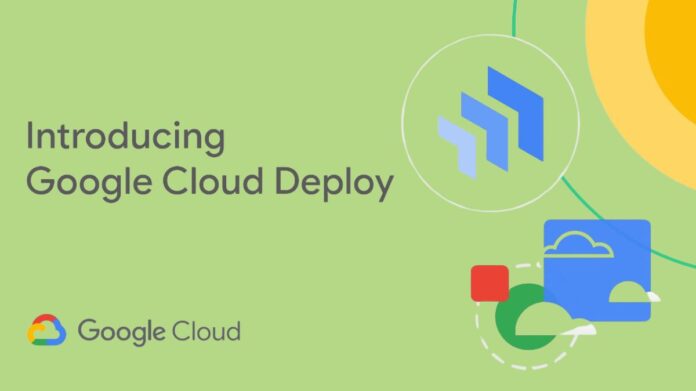Deploy Cloud
Improved Cloud Deploy capabilities for safer automated deployments. Your application’s distribution may be automated using Google Cloud Deploy, a fully managed continuous delivery platform. Customers tell us they desire additional ways to automate their deployments in addition to the current automation options so they can maintain dependable and modern production systems.
Three New Cloud Deploy features
To assist with that, Google Cloud is pleased to present three new features, all of which are under preview.
Repair rollouts
When an issue occurs, the new repair rollout automation rule allows you to immediately roll back to a prior successful release or try unsuccessful deployments again. A pre-deployment SQL migration, a configuration problem discovered when interacting with a GKE cluster, or a deployment verification process might all result in these errors. For those occasionally erratic end-to-end tests, the repair rollout automation allows you to retry the failed step a set number of times in any of these scenarios. The rollout proceeds if the retry is successful. The repair rollout automation can also revert to the last successful release if the retries don’t work (or none are set up).
Deploy policies
Although automating deployments has many benefits, it might also be crucial to place certain restrictions on it. The goal of the new deploy rules feature is to restrict the capabilities of these automations (or individuals). First, Google Cloud is implementing a time-windows strategy that may, for instance, prevent deployments on weekends, in the nights, or on significant occasions. Automated deployments cannot cause a rollout to occur during a major demo, but somebody on-caller with the Policy Overrider role might “break glass” to circumvent these rules.
Timed promotions
You might wish to automatically deploy a release to the following environment when it has been successfully rolled out. With Google Cloud’s former auto-promote feature, you could advertise a release after a predetermined amount of time, such as 12 hours after it was moved to staging and into production. Promotions, however, should frequently follow a schedule rather than be contingent on delays. For instance, at Google, Google Cloud usually advise teams to start a promotion into production on Monday mornings after promoting from a development environment into staging every Thursday. Google Cloud Deploy can take care of these planned promotions for you with the new timed promotion automation.
Cloud Deploy
Continuously deliver to Cloud Run, Google Kubernetes Engine, and other platforms.
Important characteristics
Streamlined continuous delivery
Continuous distribution to Anthos, Cloud Run services and tasks, and GKE is made simple and effective via Cloud Deploy. Define releases and move them through production, staging, and test environments. Google Cloud Deploy offers simple one-step release rollback and promotion using the web UI, CLI, or API. Insight into deployment success and frequency is made possible by built-in metrics.
Fully managed single pane of glass
Being a completely managed service, Cloud Deploy offers scale-up and scale-down capabilities automatically to maximise cost and performance without requiring any infrastructure to be set up or maintained. Additionally, this centralisation offers a single point of view for tracking and managing release candidates throughout the whole organisation as they move closer to production.
Tightly integrated with Google Cloud
The most comprehensive GKE, Cloud Run, and Anthos deployment platform on the market is Cloud Deploy. Use IAM to lockdown the release process, use Cloud Logging to track release events, and use Cloud Audit Logs to provide traceability. Link deployed resources to monitoring.
Integrates with the tools you love
CI and ticketing are two common DevOps technologies that may be connected with Cloud Deploy. When used with Cloud Code, Skaffold, which Google Cloud Deploy adds to your pipelines, creates pipeline parity across CI/CD and development.
Pricing
Customers of Google Cloud Deploy pay a management fee for each active delivery pipeline that has several targets (also known as a “multiple target delivery pipeline”). any billing account’s first active multiple target delivery pipeline is free of charge; any additional active multiple target delivery pipeline incurs a $5 monthly fee.
A management fee is not charged for delivery pipelines with a single target.
Charges for underlying services are also applicable for all delivery pipelines.
The future
Effective software delivery requires comprehensive, user-friendly, and reasonably priced DevOps tools, and Google Cloud believe that Cloud Deploy will assist you in putting full CI/CD pipelines into place. Keep checking back as Google Cloud roll out exciting new features and capabilities for Cloud Deploy in the upcoming months.
Use these new features to update your existing pipelines right now. Examine the product website, tutorials, quickstarts, and documentation. Lastly, you may contribute to the discussion if you have any comments about Google Cloud Deploy. Google Cloud is eager to hear from you!


